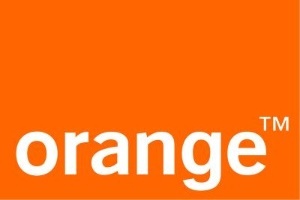Orange and Vodafone have agreed to jointly build Open RAN (radio access network) infrastructure across rural parts of Europe, through sharing RAN capabilities, and the move is indicative of what should happen in the industry going forward, says business technology journalist Antony Savvas.
Open RAN sees telcos and other communications service providers (CSPs) build disaggregated mobile networks using hardware and software from different providers, instead of relying on complete proprietary systems from the likes of Nokia, Ericsson, Samsung and Huawei. This is designed to make the builds cheaper.

The move by Orange and Vodafone is said to be the first time that companies have agreed to share Open RAN networks in Europe.
The first commercial sites to be deployed under the agreement are planned to start this year in a rural area of Romania, near Bucharest.
The partners will provide an initial “real-life experience” of the operational model, based on the integration of multi-vendor hardware and software.
This will pave the way for wider scale deployments. Orange and Vodafone are currently selecting strategic vendors for the initial build phase.
Ambitious target

The companies’ commitment to shared Open RAN, they say, supports the European Commission’s “ambitious target” to have 5G in all populated areas by 2030.
“By using open and virtualised RANs, relying on disaggregated software and hardware, Vodafone and Orange will each have greater flexibility when adding new radio sites or upgrading existing ones, while keeping the cost and energy consumption low,” say the firms.
Testing on the new networks will continue throughout the year, they add.
“This is a significant milestone on the road to wide-scale open RAN adoption across Europe. It is a major step towards agile and fully-automated networks, unleashing the potential of virtualisation and AI to boost performance while driving both infrastructure and operational costs down,” says Michael Trabbia, chief technology and innovation officer at Orange.
“In particular, Open RAN is a great opportunity to take network sharing to a whole new dimension, with even higher operator differentiation thanks to the ability for each partner to tune their network more independently according to promises made to their own customers.”
Not-spots

Alberto Ripepi, chief network officer of Vodafone, adds, “By combining resources, we will reduce the cost of hardware, minimise fuel consumption and the need for duplicate sites whilst eradicating coverage not-spots.
“Open RAN also means we can more quickly add new software features without necessarily replacing the hardware components, which is often the case today. This minimises any disruption to service and ensures customers in rural areas receive the same upgrades as those in the cities.”
Under existing sharing agreements, one operator is typically responsible for all the component parts of a shared site, with all operators using the same RAN vendor or software release, and lifecycle management.

Open RAN sharing paves the way for Orange and Vodafone to fully benefit from a truly open infrastructure, allowing the sharing of all hardware components while independently managing their own RAN software on a common cloud infrastructure. As a result, each company can tailor services and capacity to their specific customer needs, while ensuring a strong and secure isolation between each other’s data.
This is in line with the priorities that have been developed under the memorandum of understanding (MoU) both operators signed in early 2021 with other major European operators.
Standardisation
Such standardisation in the mobile industry will dictate future innovation and growth, maintains Dario Betti, CEO of the Mobile Ecosystem Forum (MEF).

“Fortunately, the mobile industry has learned that cooperation and collaboration helps everyone. As such, the initial issues around compatibility, bands, roaming, and so on, have been mostly resolved.
“Standardisation forms a set of blueprints for the mobile industry and connected technologies, such as IoT devices, encouraging competition by creating a level playing field as well as helping the market as a whole innovate to meet evolving consumer needs,” says Betti.
But, he warns, “Mobile standardisation needs to achieve a balance between innovation and security: open enough to encourage the development of new technologies and services but not so open that they introduce unnecessary security concerns.”
The environment
Betti also champions the benefits of standardisation for the environment. “Standardisation can enable the development and deployment of more energy-efficient technologies and practices. These can include energy-efficient base stations, energy-saving modes for devices, and efficient use of spectrum, all helping to reduce carbon emissions.”
Private security

In a separate development, Atos has launched 5Guard, to help telcos and enterprises securely deploy private 5G networks. 5Guard helps firms identify risks and develop an end-to-end security strategy to protect critical business and data going over radio access network platforms, multiple access edge computing (MEC) services, 5G core networks and multi-cloud platforms.
The offering includes encryption solutions, identity and access management software, a managed detection and response (MDR) platform, and specific 5G security technology from partner Fortinet.
Atos is operating in a now busy space though, with other suppliers like Nokia, Thales with Ericsson, Palo Alto Networks, Trend Micro, and Cisco recently fleshing out their 5G security offerings. But it’s good that Atos’ move demonstrates there is increasing demand for such solutions as CSPs and enterprises take their data protection responsibilities seriously.
The author is Antony Savvas, a global freelance business technology journalist.
Comment on this article below or via Twitter: @VanillaPlus OR @jcvplus






